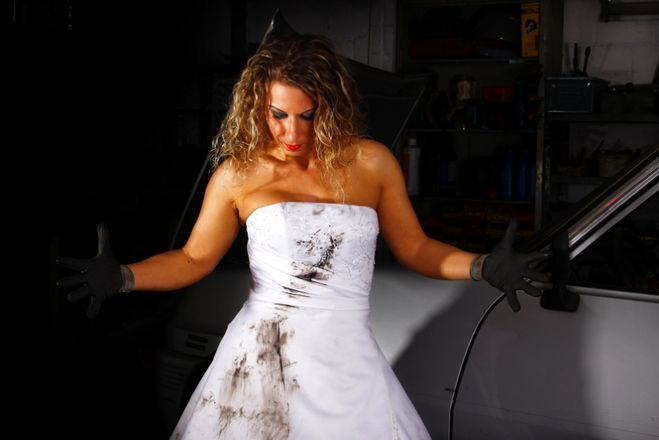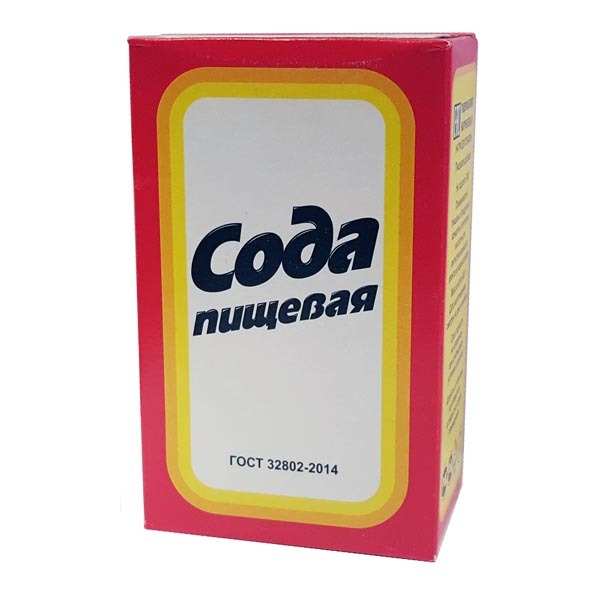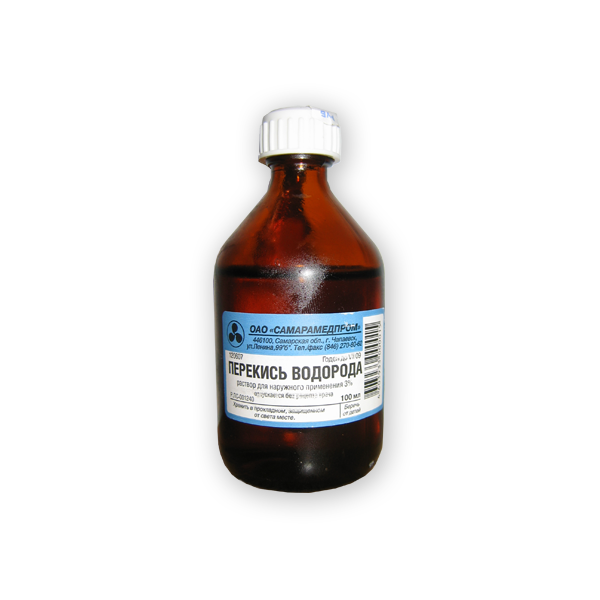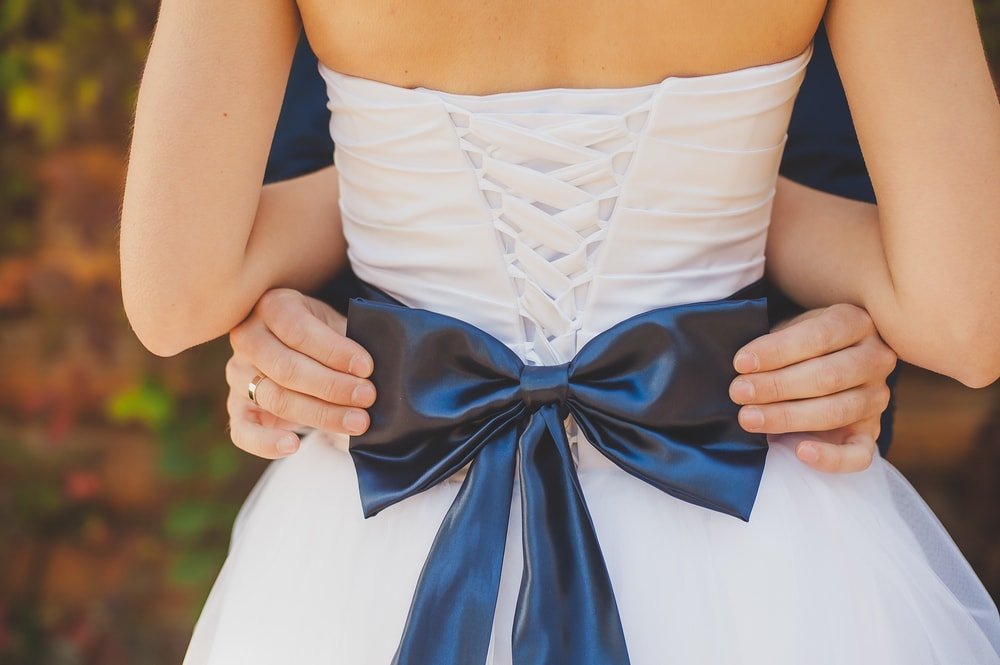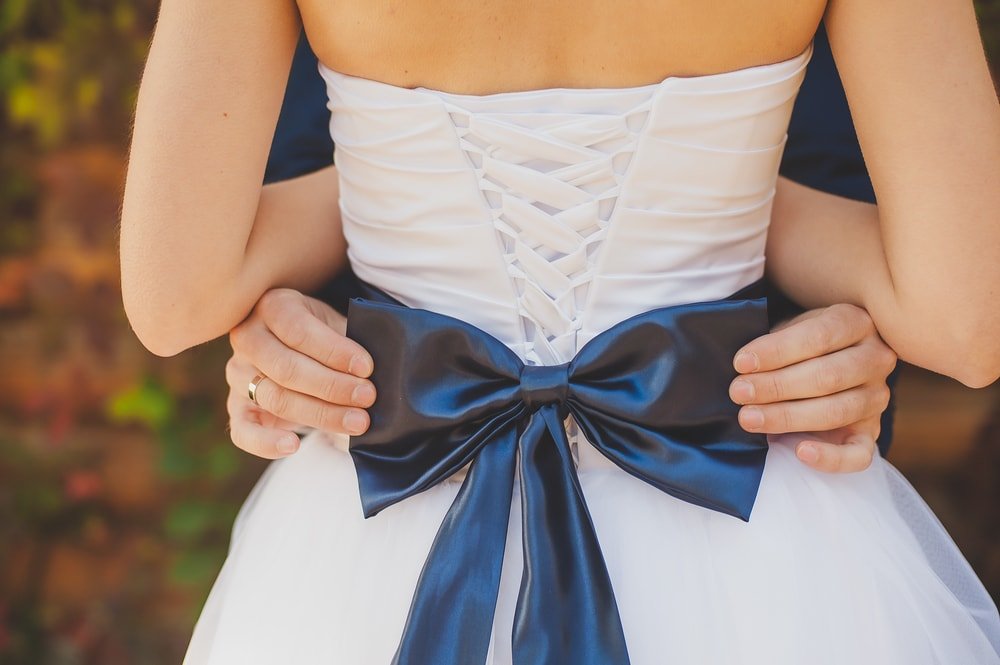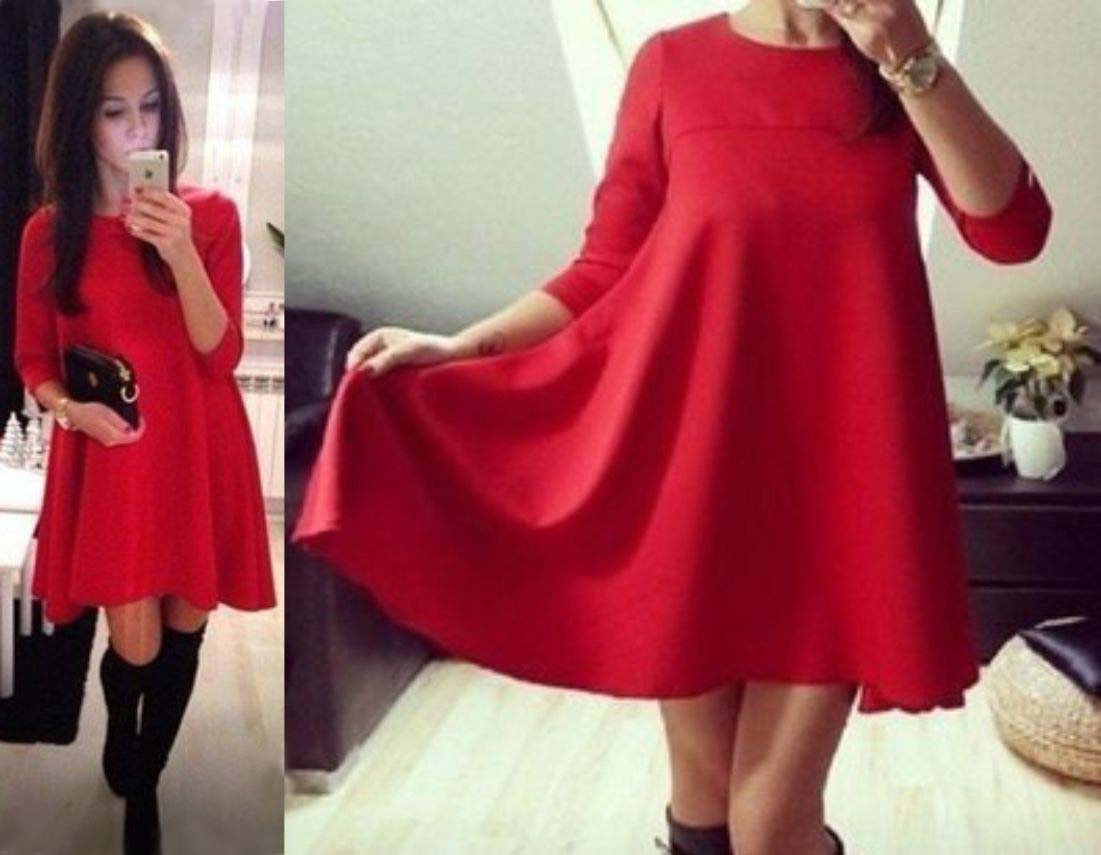A wedding celebration involves long festivities with dancing, feasts and fun times. And no matter how carefully and carefully the bride tries to treat her dress, stains or dust are almost inevitable. Therefore, most brides ask themselves the question "how to wash a wedding dress at home?" Read the answer to this question below.
Is it possible to wash at home?
When the question of washing a wedding dress arises, many girls are afraid that it will not be possible to restore the original appearance of the dress without the help of dry cleaners and specialists. In fact, washing a wedding dress at home will not harm the dress if you do it by adhering to several simple rules:
- To remove dirt from dust or grass from the skirt of a dress, you need to use a piece of laundry soap and water,
- Sweat stains under the arms and on the corset can be removed with a soda solution,
- The easiest way to remove stains from greasy foods is with nail polish remover containing acetone.
- Before you start washing your dress, you need to make sure that all the decoration is sewn or glued securely.
- When washing a wedding dress, do not use aggressive detergents: powders, gels or liquids for washing,
- It is strictly forbidden to wash a wedding dress at a temperature above 40 degrees,
- Particular attention should be paid to the washing mode: for thin, flowing fabrics, choose a delicate mode, for thicker and stiffer ones - a shortened mode,
- It is strictly forbidden to wash a wedding dress using products containing chlorine, because it can corrode the fabric, leaving stains or marks on it.
In addition, it is necessary to pay special attention to the composition of the fabric from which the wedding dress is sewn. The washing mode, water temperature and ironing of the product directly depend on this.
If there are no gentle detergents, you can use baby shampoo instead of powder or gel: it does not contain aggressive components and will not harm delicate fabrics.
Cleaning options
There are several ways to wash a wedding dress at home: in a washing machine or by hand. Both methods have their advantages and disadvantages, which must be taken into account when choosing a washing method.
In the car
The option of washing a wedding dress in a washing machine is less gentle than hand washing, but the mechanical assistant will rinse the dress better, cleaning it from foam and dirt. This method will help save time and effort.
To properly wash a wedding dress in a washing machine, you must follow these recommendations:
- Before washing, the wedding dress should be packed in a special bag for washing delicate items; if there is none, use a white pillowcase, sewn up beforehand.
- Select a delicate wash cycle or, if this option is not available, reduce the wash time by half.
- Temperature conditions – no higher than 40 degrees,
- Before washing, you need to take care of removing stains and greasiness, since they will not come out on a delicate wash cycle.
- Set the spin speed to minimum,
- To prevent rhinestones, sequins or decorative elements from rubbing against the hem of the dress, it must be turned inside out.
- Before washing the dress, you need to make sure that all the decor is securely fastened; if you notice any torn or damaged threads, it is better to rip off the decor in advance.
- If the decor is securely attached to the fabric, a thin layer of gauze or other fabric is sewn onto it for additional insurance.
Don't listen to the rather common advice "don't wring your dress in the washing machine." This is a mistake, because the wet hem will pull the garment down, resulting in an unattractive stretch, and the shoulders and corset may stretch.
Particular care should be taken when washing dresses that are heavily decorated with ribbons, beads, sequins or pearls. During machine washing, small decorations may peel off, come off, leaving noticeable snags on the material.
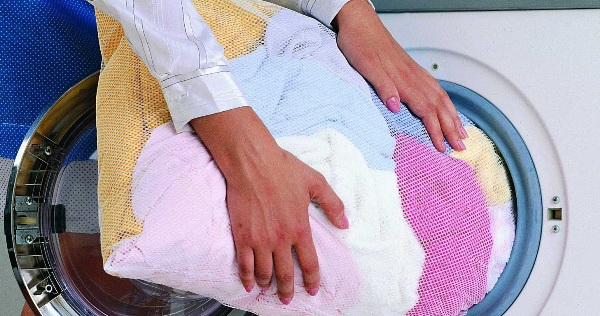




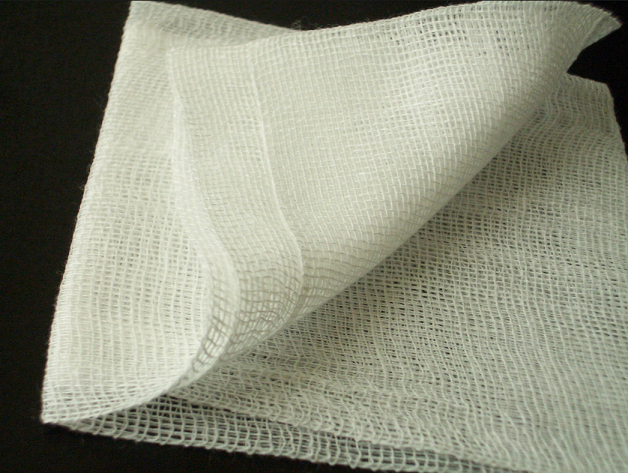
Hand wash
Hand washing is ideal for dresses made of thin, flowing fabrics: chiffon, viscose, satin. When hand washing, a girl does not have to worry about decorative elements coming off or coming off during the spin cycle. Even if such a nuisance does happen, all the decor will remain in the bathroom and can be sewn back into place.
Despite the fact that hand washing is considered a more delicate method, there are also a number of recommendations for it:
- For convenience, it is recommended to fill the bathtub with water only partially: the optimal volume of water is 1/4 of the bathtub volume,
- In warm water (not higher than 40 degrees) it is necessary to dissolve powder for hand washing, liquid gel,
- Soak the dress completely in water, then soak a soft washcloth in the soapy solution and gently clean the skirt of the dress, then the waistline, corset,
- At the end of washing, it is recommended to leave the dress in warm water for an hour and a half, then rinse it well and dry it on a flat surface so that the wet hem does not pull the product down.
It is very convenient to rinse the dress for the first time using a shower, having hung it on a hanger beforehand. This method allows you to remove the first, largest layer of foam. After that, the dress can be rinsed in the bathroom a second time, removing the remaining soap foam.
It is recommended to rinse the dress after washing at least three times, the first two times in warm water, the third time in cool water. The dress should be poured with water from top to bottom so that the water flows from the corset to the hem of the skirt. If the wedding dress has many layers of tulle or a fluffy wedding skirt, when washing in a washing machine, you can add conditioner or a little starch, then the product will regain its original appearance.
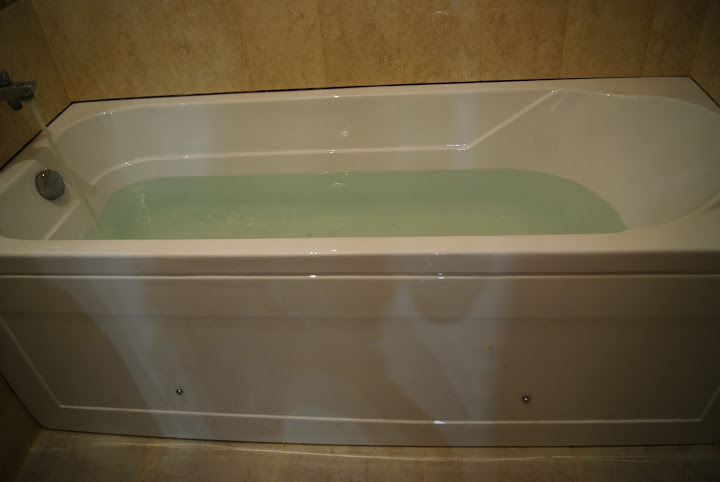

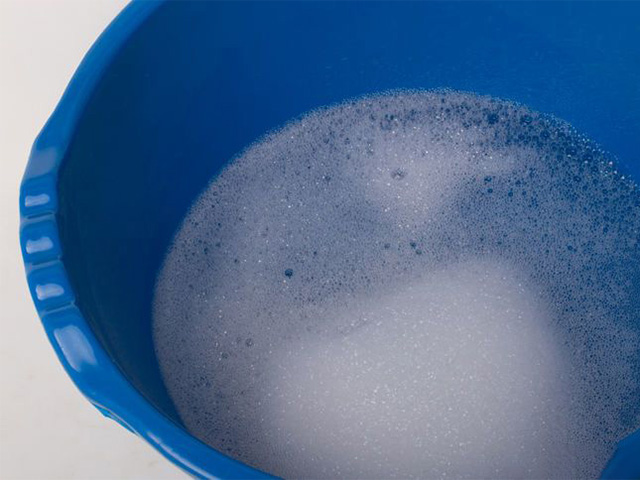
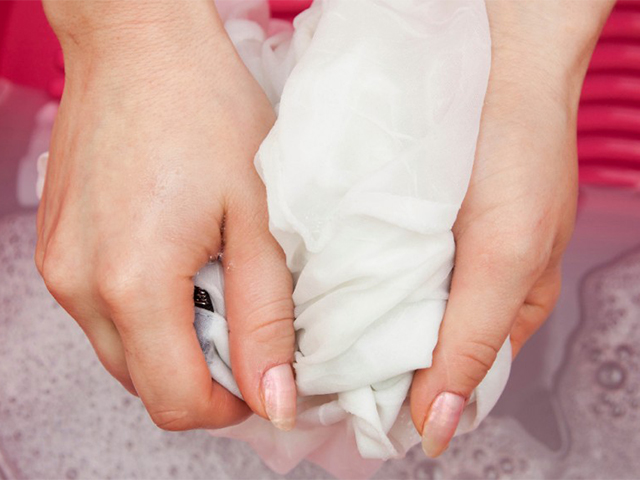
How to remove stains
If washing itself does not cause many questions and fears for girls, then removing stains is a much more delicate and important matter. When the wedding has already passed, the bride needs to carefully inspect her wedding dress for stains and heavy dirt, since over time it will be increasingly difficult to wash them.
There are a number of the most common products that will not harm the fabric of the wedding dress, but will help remove stains in a matter of minutes.
Soap
The most well-known option for removing stains from clothing. Soap will help remove stains from coffee, chocolate or juice if they are fresh. For stubborn stains, you can apply soap foam to the dirty area, hold the foam for a few minutes, and then put the item in the washing machine.
Laundry soap will help remove stains from greasy food or berry or fruit juice. In combination with ammonia, laundry soap can get rid of almost any stain.
Soda
To get rid of signs of wear or yellowing on a wedding dress, it is enough to add one and a half to two tablespoons of soda to the washing powder. Calcined soda copes well with greasy stains, dirt from berry and fruit juice, alcoholic beverages. It copes well with any difficult to remove stains that soap cannot handle.
Acetone
If your wedding dress has stains from toilet water or perfume, the best option is acetone. Before applying it, the stain must be soaked in glycerin dissolved in pure alcohol.
Acetone also works great on stains from synthetic glue, paint or varnish. The only rule to remember is that it cannot be used on synthetic fabrics.
Hydrogen peroxide
Hydrogen peroxide is considered the most gentle way to remove stains from white clothes. But it also copes well with lipstick stains: you need to soak the stain in a peroxide solution, and then wash the item in warm soapy water. In addition, peroxide is excellent for removing wine stains. It is enough to dissolve two teaspoons of peroxide in a glass of water, wet the dirty area with this solution, and then rinse it with cold water.
Common mistakes
For a girl who knows simple secrets and tips for caring for a wedding dress, the question "how to wash a wedding dress at home?" does not cause fear. But it is also necessary to know what are the most common mistakes brides make when caring for their wedding dress:
- Many girls think about washing their wedding dress a few weeks or even months after the celebration itself. This approach is fraught with the fact that the stains on the fabric will become old and it will be much more difficult to remove them than a day or two after the celebration;
- It is necessary to find out in advance what fabric the wedding dress is made of, since the washing mode and water temperature directly depend on this;
- It is important to remember: synthetic fabrics may shrink when exposed to hot water during washing, and natural fabrics will lose their attractive appearance;
- If possible, any decoration in the form of beads, rhinestones, ribbons should be ripped off and sewn on after washing, since during washing it may come off or leave snags on the fabric;
- It is not recommended to dry the dress in the washing machine, as this type of drying will lead to deformation of the product;
- A good way to dry your wedding dress is to lay it out on soft, plain cotton towels, which will quickly absorb excess moisture.
After the product has been washed, it must be dried and ironed if necessary. To prevent the dress from stretching during drying, it must be dried horizontally. The ideal option is an electric dryer, on which you can lay the wedding dress flat, and it will have fewer wrinkles.
After drying, the dress must be ironed. A steam generator is ideal for this action. Unlike an iron, it will not leave oil marks on the fabric and the dress will retain its original appearance.
If there is no steam generator in the house, you can use an iron, but follow these rules:
- The temperature should be minimal;
- Before ironing, you must carefully check the sole of the iron: it must be perfectly clean;
- To be on the safe side, you can cover the ironing board with a thick, plain fabric so that no dirt sticks to the hem of the dress;
- It is also better to cover the carpet or linoleum under the ironing board with a clean, plain cloth so that the dress does not get dirty when it comes into contact with the floor;
- Ironing of the outfit should begin with the sleeves and corset, gradually moving down to the hem;
- Ironing the hem will take much more time and effort; to make this process easier, you can hang the dress on a hanger and iron each layer of the skirt separately;
- It is best to iron lace parts on a dress through a layer of thin fabric on the most delicate setting;
- It is recommended to iron the bodice of a dress, as well as satin outfits, from the inside out.
By following these simple tips, washing and restoring your wedding dress to its original appearance at home will not be difficult.
Video
https://www.youtube.com/watch?v=uY5OyjFgsho




